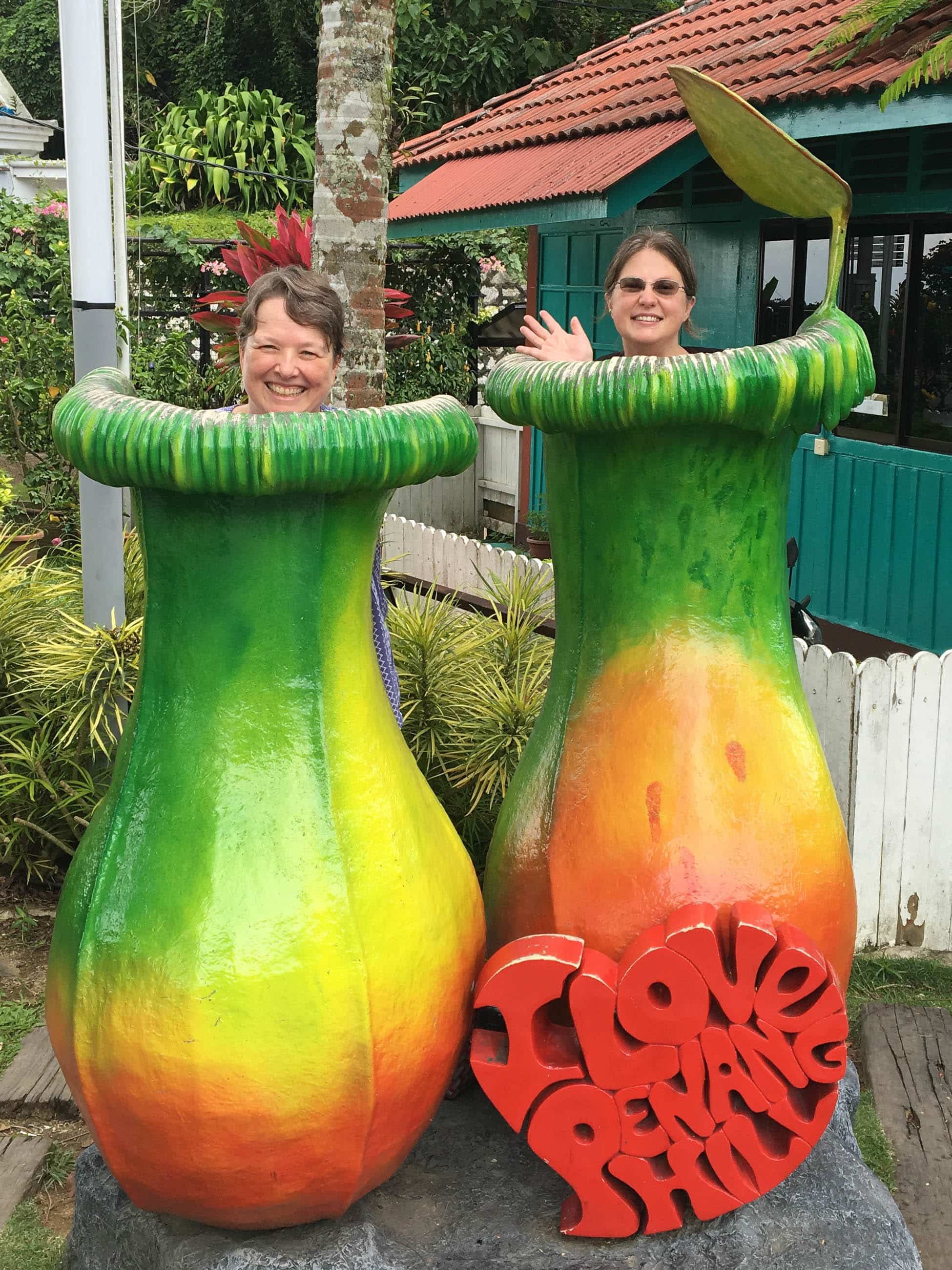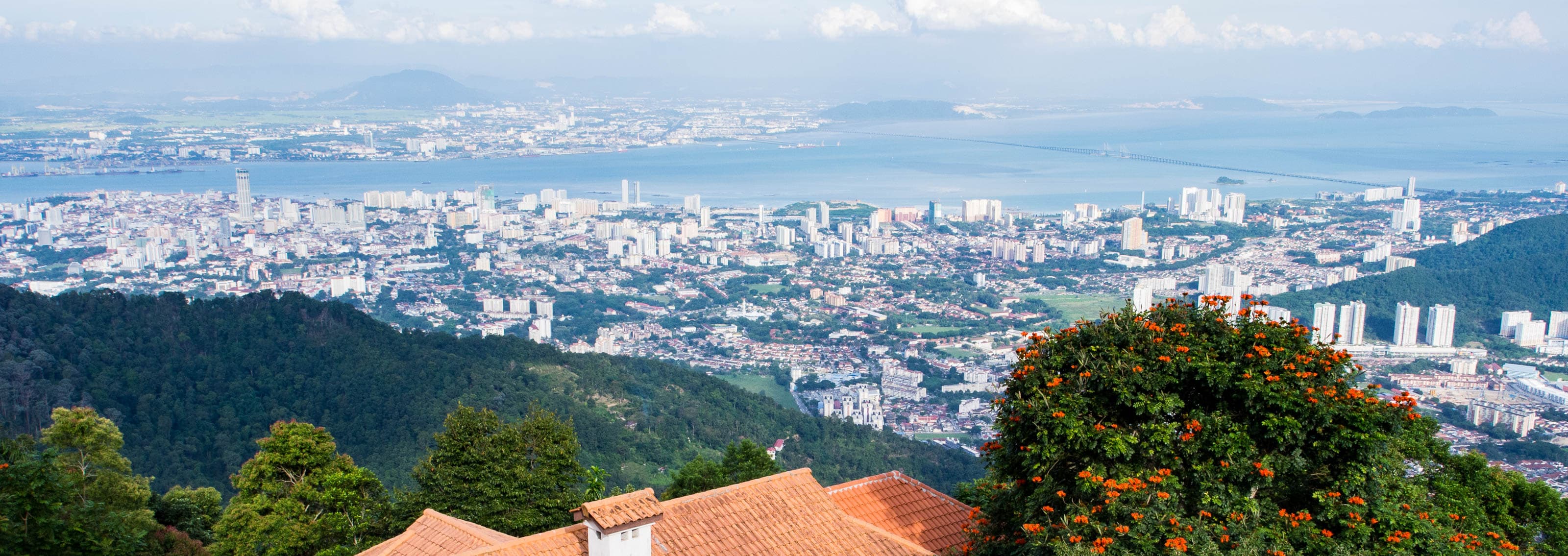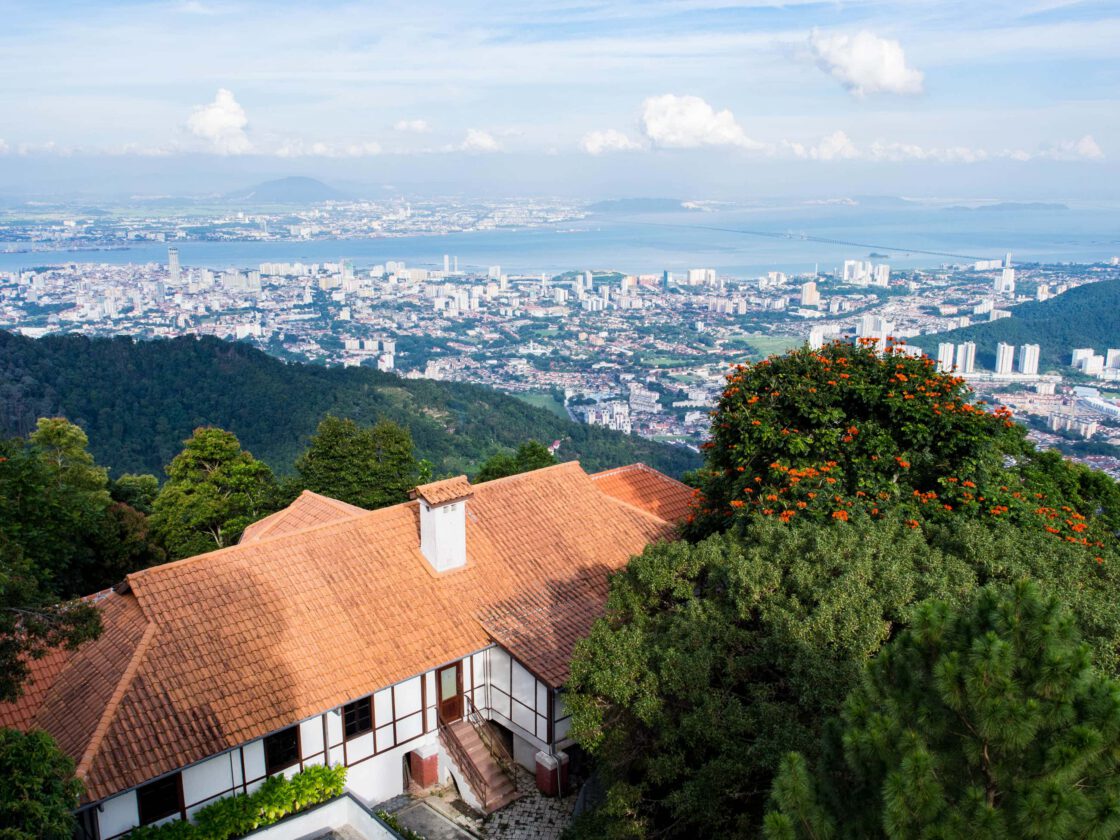On Tuesday, we did what countless people in Penang have done for centuries: rode up to the highest part of the island in search of cooler air. Most of the development in Penang is around the coasts; the center of the island is forested mountains. The highest point that is easily accessible, Penang Hill, is 735 meters (2,411 feet) tall. British colonists started flocking there in the late 1700s to escape the heat, making it the oldest British hill station in Southeast Asia.
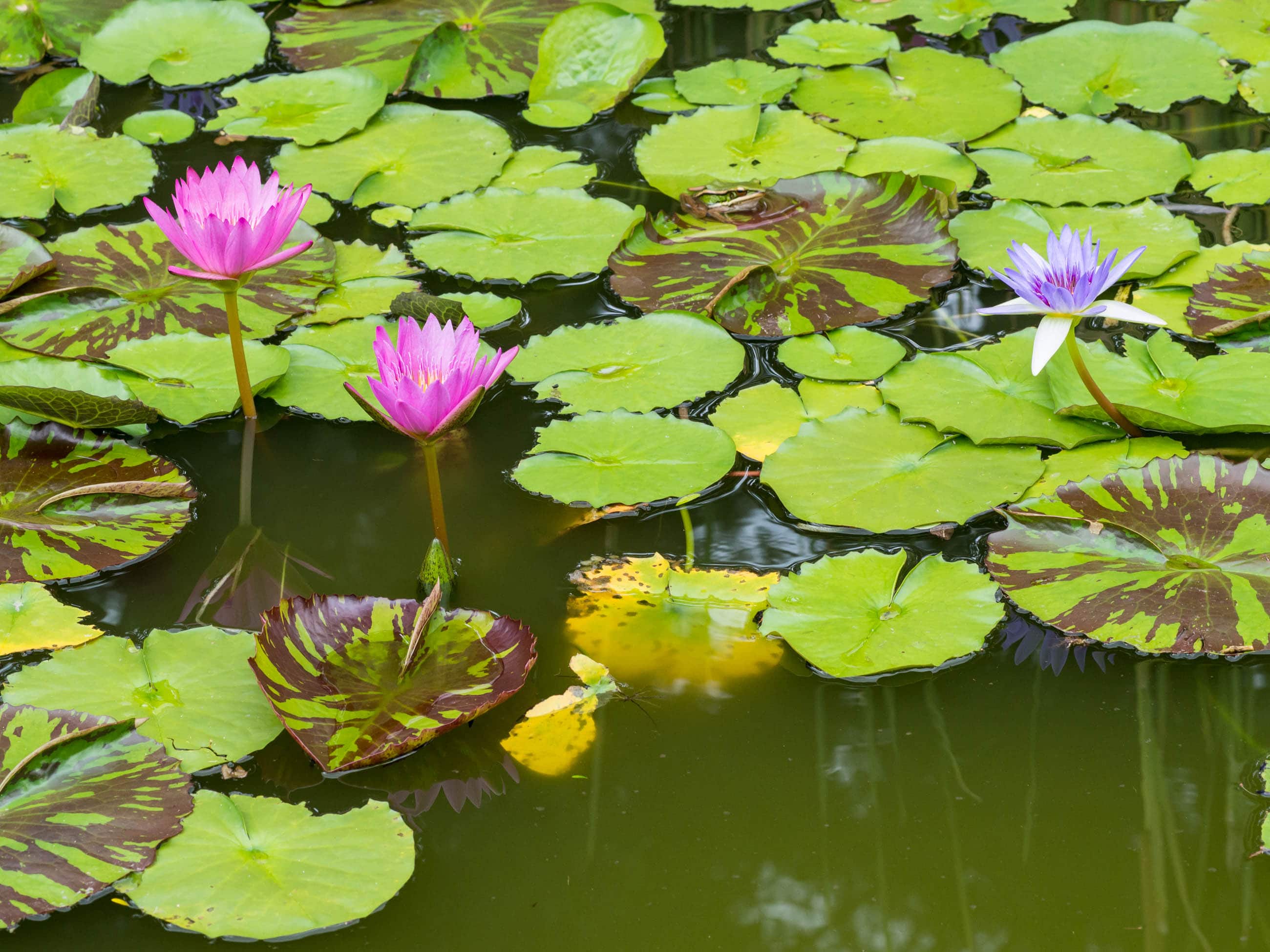
A glass-enclosed funicular train whisked us up the steep slope in just a few minutes—a huge improvement on the days when wealthy visitors had a long, bumpy ride to the top in sedan chairs carried by Indian porters. At the summit, we were rewarded with spectacular views around three sides of Penang and off to mainland Malaysia. We picked out many of the landmarks we’ve visited around Penang and even spotted the neighborhood where we’re housesitting.
At the top, we had an expensive but tasty lunch at a 19th-century mock-Tudor restaurant (where you can even get beef Wellington if you’re prepared to shell out enough) on a pretty terrace with a gorgeous view. Afterward we strolled one of the roads that ring the summit, admiring the big stone and wooden “cottages,” most of which are more than 100 years old. Building permits on Penang Hill are strictly limited, and there are only 52 houses (some of which, now as then, are retreats for government officials).
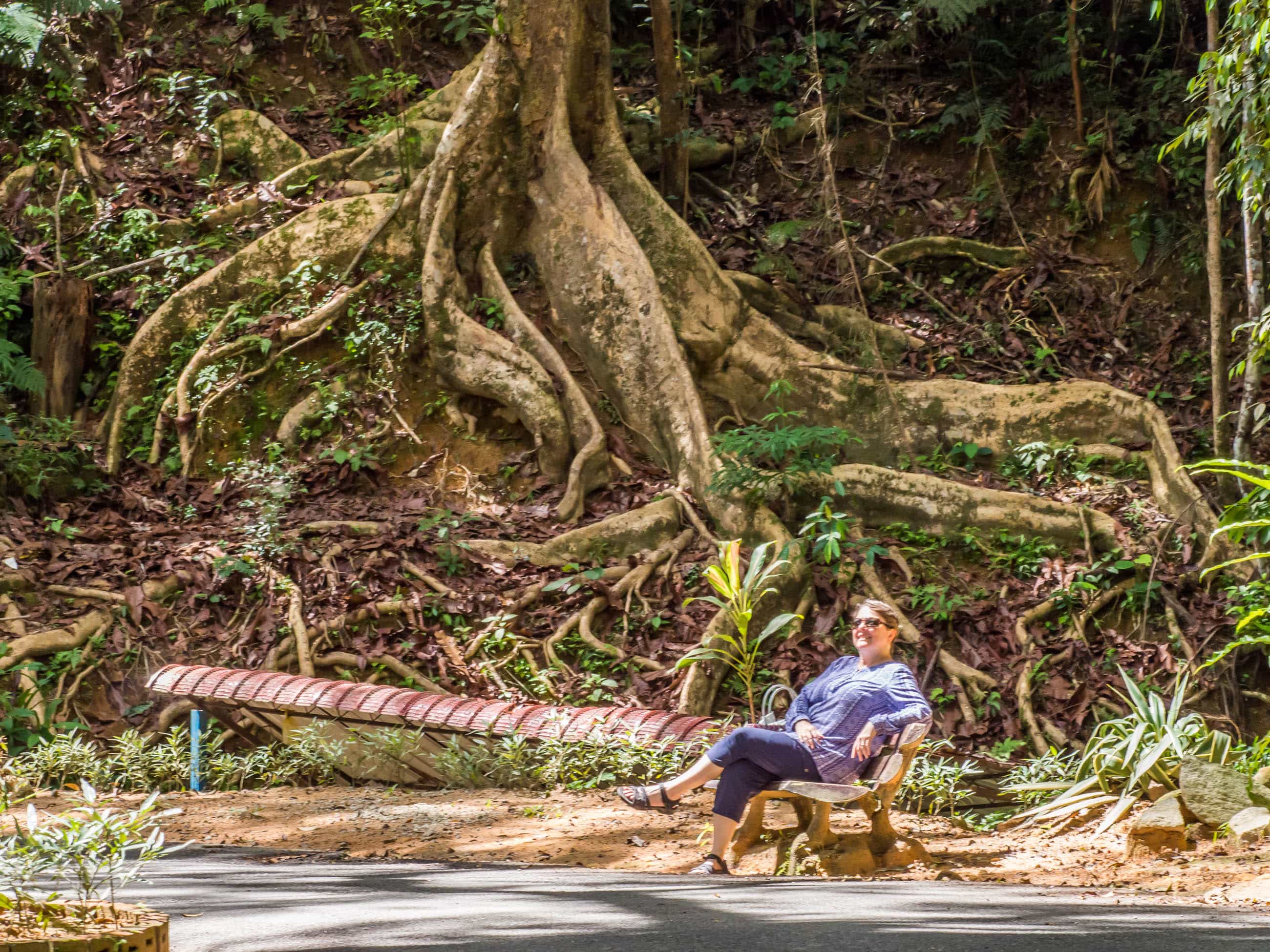
Everywhere we looked we saw beautiful tropical flowers and lush green forest. This is our favorite way to see the jungle, strolling along its edges on the top of a hill with lots of breezes. Temperatures were about 5 degrees cooler than down at sea level, but the humidity was just as oppressive.
We also spotted some freakishly large local fauna: spiders as big as your hand (Chris’s nightmare) and a black and yellow squirrel that can grow to be 50 cm (a foot and a half) long. The giant black squirrel is a very shy creature, so we were lucky to see one sleeping high on a branch (too far up for a good photo).
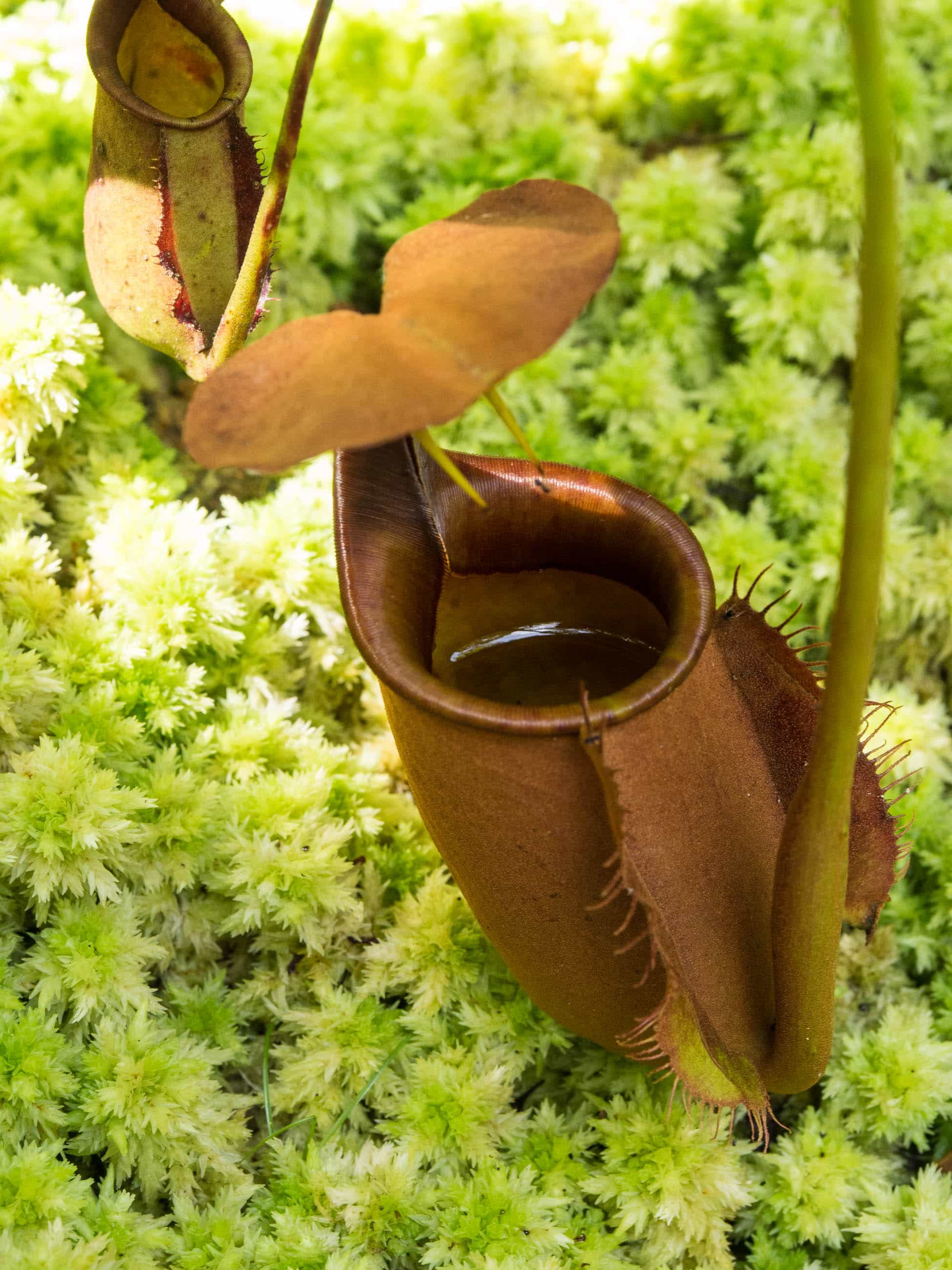
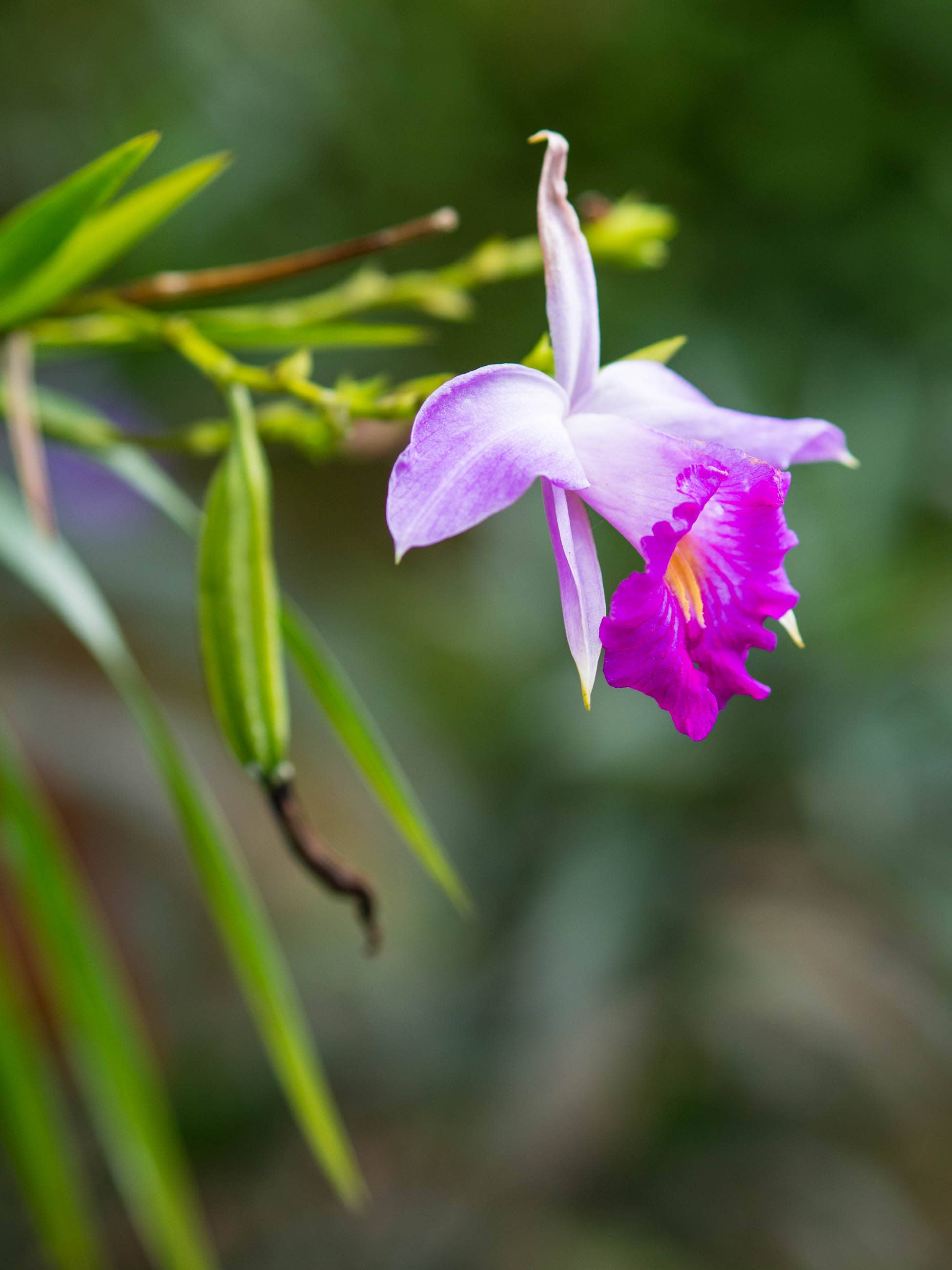
Our walk ended at a garden devoted to pitcher plants—called monkey cups here because monkeys are thought to drink the water collected in the bottom. Many types of these insect-eating plants are native to Malaysia. The garden also features hybrid species and carnivorous plants from other countries, including the North American jack in the pulpit. (Our guide hadn’t heard that English name before, and I’m not sure my attempt to explain what a pulpit is quite got through to her.)
It’s a good thing we saved this trip for our last week in Penang. Otherwise, we might have spent all of our days up on the hill enjoying the cool, green surroundings and missed out on exploring the warrens of streets down below.
